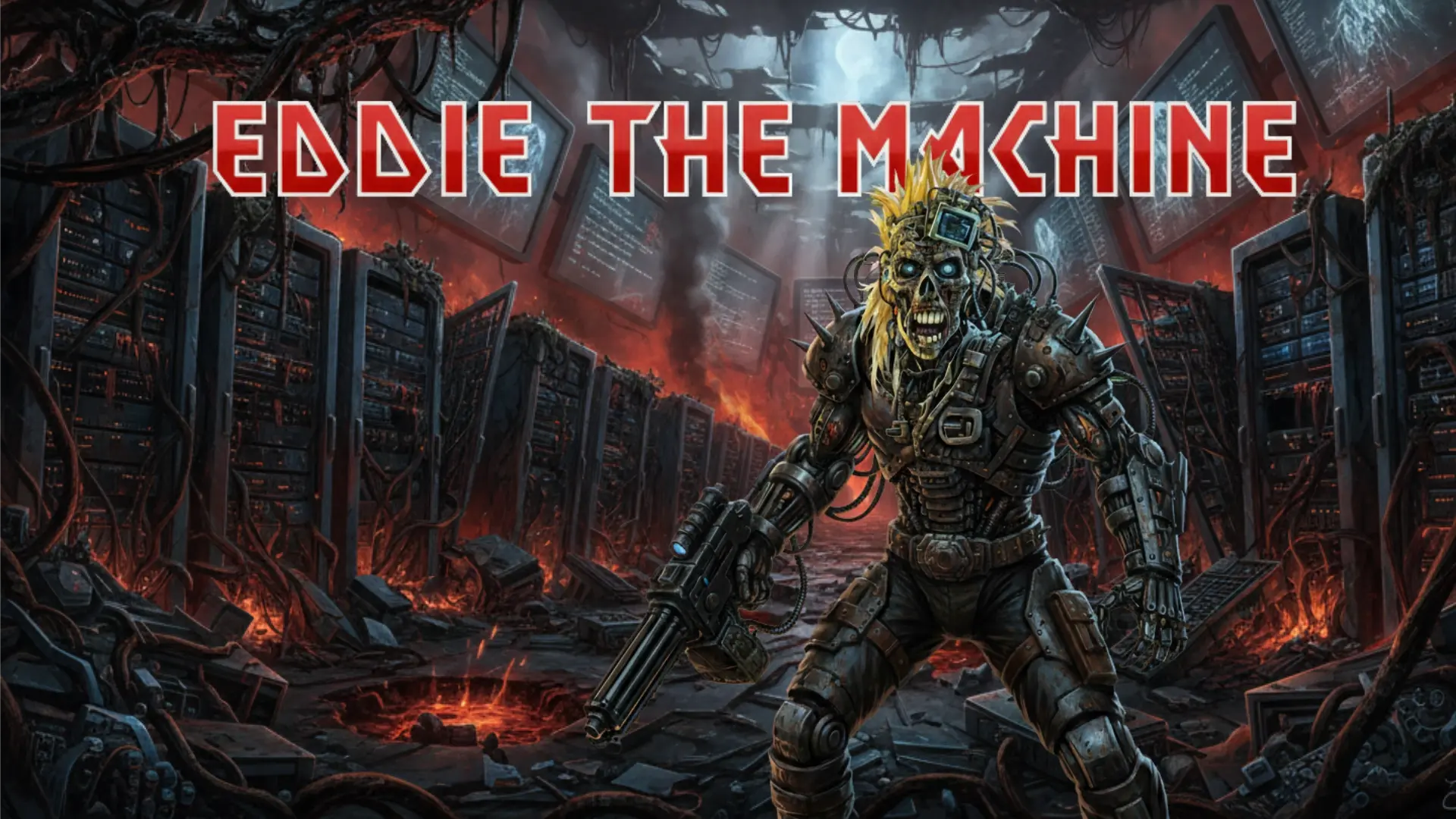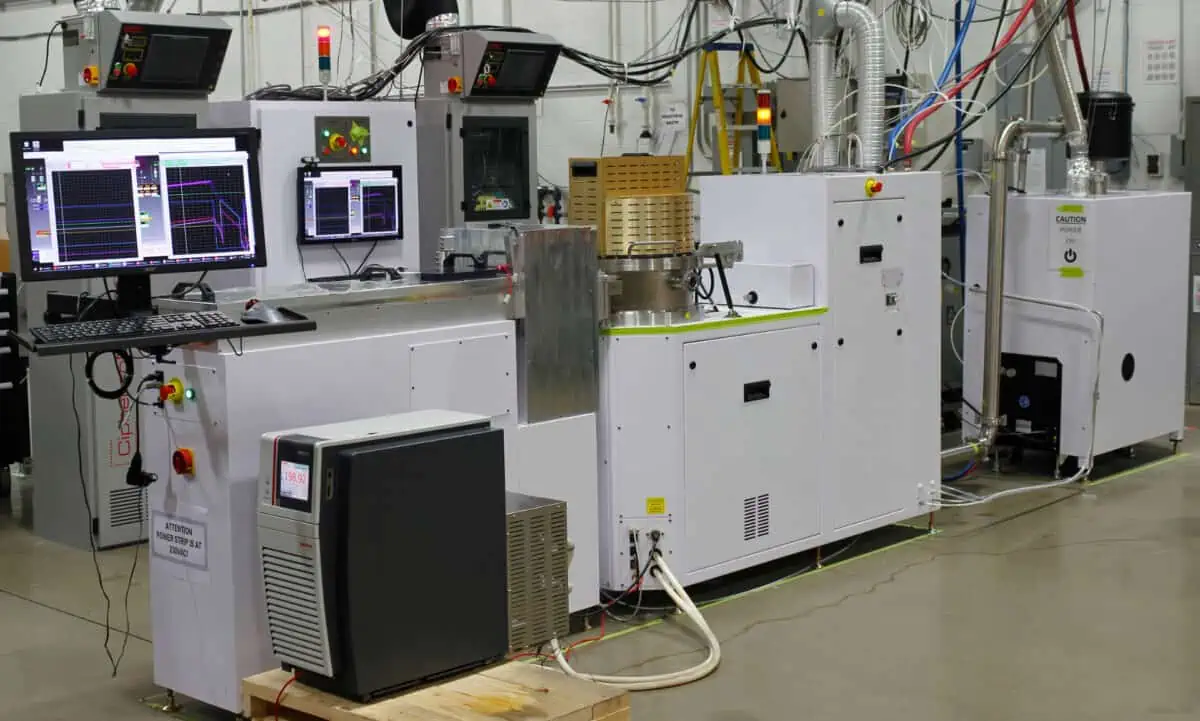Sign up for our newsletter!
Your data will be handled in compliance with our privacy policy.
Your data will be handled in compliance with our privacy policy.

When Smoltek announced they would install their high-volume production machine in Taiwan, shareholders expected updates. Instead: silence. Where is the machine the investor community calls Eddie? In this lighthearted investigation, a freelance writer turns detective to solve a mystery that reveals more about business strategy than shipping logistics.
Thomas Barregren • November 14, 2025
Eddie is the shareholders’ affectionate name for Smoltek Semi’s advanced plasma enhanced chemical vapor deposition (PECVD) tool for high-volume carbon nanofiber production. Back in June, Smoltek announced that it was heading to Taiwan to join ITRI, where it would facilitate a complete fabrication process under one roof. That was months ago. Since then? Radio silence.
Somewhere between a warehouse in Sweden and a research facility in Taiwan, Eddie has vanished from the shareholder radar. Has it left Sweden? Is it on a cargo ship crossing the Pacific? Has it arrived? Smoltek’s investor community on Discord went wild with speculation.
As clueless as everyone else, I decided to solve the mystery.
As a freelance writer for Smoltek, I’m rarely in the loop. But armed with nothing but a keyboard and determination, I set out to become the shareholders’ own Hercule Poirot. Well, without the elegant three-piece suits. Or the Belgian accent. And frankly, with considerably less impressive deductive reasoning. But I had determination.
My first move was simple: I emailed my contact at Smoltek. Surely someone there must know where their multi-million kronor machine had ended up?
The response came quickly. Too quickly, perhaps. As Poirot would say: when the answer comes easily, one must suspect that the question was wrong all along.
“Eddie,” my contact informed me, “is in Gothenburg. In a warehouse. Where it has been all along.”
I stared at my screen. That was it? No dramatic ocean crossing? No triumphant arrival announcement? No installation photos from Taiwan?
Eddie hadn’t even left Sweden. It had been sitting in storage the entire time.
My career as a shareholder detective seemed to have peaked early. The mystery was solved in a single email exchange. Case closed.
But wait. The little grey cells started working. (I may not have Poirot’s need for order and symmetry, but I’ve read enough detective novels to know that the obvious answer demands the most interesting explanation.)
Why would a machine specifically ordered, custom-built, and destined for Taiwan still be sitting in a Swedish warehouse months after the announcement? This wasn’t the end of the story. It was just the beginning.
The question wasn’t “Where is Eddie?” The real question was: “Why hasn’t Eddie moved?”
And the answer reveals something far more important about Smoltek’s business strategy than any shipping update ever could.
Eddie stands disassembled and packed on pallets in a warehouse somewhere in an industrial area in western Gothenburg. In fact, Smoltek has never even unpacked it. Everything remains in the original packaging from the manufacturer in the United States.
And here’s the crucial detail: the agreement with ITRI was never about shipping Eddie immediately. It gives Smoltek the flexibility to decide when to ship and assemble Eddie at ITRI.
So why not do it immediately?
First, there is no urgency. The established network of partners currently manufacturing for Smoltek Semi is fully capable of producing the volumes Smoltek requires at present. They can already produce CNF-MIM capacitor prototypes for customer projects using existing equipment. Installation at ITRI simply isn’t essential right now.
This creates an opportunity. Since production needs are being met through existing channels, Smoltek Semi can fine-tune the Eddie machine to deploy their latest innovations in CNF growth before commissioning it.
The CNF-MIM technology is continuously being developed. As research progresses, Smoltek Semi identifies ways to improve Eddie.
One improvement would be to adapt the machine to enable nickel to be used in the growth process. Nickel offers certain advantages, including being cheaper than palladium (though cost is not a driving factor). But… Nickel requires higher processing temperatures. Therefore, if Smoltek Semi wants to use this approach with Eddie, the company first needs to ensure that the machine can reliably handle those higher temperatures.
This is just one potential optimization among many. And here’s where the strategy becomes clear: if you want to make such improvements, Taiwan might not be the best place to do it. Modifications might be more effectively conducted in Sweden or back at the manufacturer’s facility in the United States.
Now consider the costs: shipping Eddie to Taiwan involves significant expenses, especially with high customs tariffs. Installing it requires additional investment. Running it means paying for on-site personnel, insurance, and maintenance. And if modifications are needed after all that? You’d have to disassemble, re-ship, pay those customs fees again, and then ship back once more.
The financial logic is straightforward: it’s unnecessary to incur costs for shipping, installation, and operation only to potentially disassemble and ship again shortly after. Better to wait and see. Better to focus on understanding exactly what optimizations would make Eddie production-ready for the long term.
As CEO Magnus Andersson explains, it’s strategically important at this stage to focus on understanding customer requirements and building them into the production line. That way, when the system is finally installed, it will already be optimized to produce CNF-MIM capacitors according to specific needs.
So Eddie remains in storage. It will stay there as long as Smoltek can manage production through existing partners, ready to be deployed when – and where – the optimizations are complete and the move becomes strategically and economically sound.
One might ask: why did Smoltek’s former CEO order the machine before knowing exactly what optimizations would be needed?
Timing is difficult. If he hadn’t ordered it and demand had suddenly materialized, Smoltek would have faced problems ramping up production quickly. He was wise to order it so we’d be ready. But securing the capability early created a new luxury: time to optimize properly.
Ironically, current CEO Magnus Andersson faces the same fundamental dilemma as his predecessor: Should he incur the costs for shipping, assembly, personnel, and insurance now to be ready slightly earlier? Or should he conserve the company’s resources and ensure Eddie is truly optimized first?
Magnus has chosen the cautious path. Eddie waits.
For those unfamiliar with the technical details, let me back up.
Eddie isn’t just “a machine.” It’s a custom-built plasma enhanced chemical vapor deposition (PECVD) system designed to produce carbon nanofibers at industrial scale. These nanofibers are the key to Smoltek Semi’s ultrathin CNF-MIM capacitors.
Eddie has an impressive work capacity. Currently, it can process one 8‑inch wafer every half hour. Each 8‑inch wafer contains 48,000 CNF-MIM capacitors. With 500 wafers per month, that’s 24 million capacitors per month. And that’s just the beginning. The machine can be scaled up tenfold to produce 5,000 wafers per month.
If you want the full technical story – and trust me, it’s fascinating – I wrote about it back in June: The Machine.
The short version: Eddie represents the future of high-volume CNF-MIM production. It’s the bridge between laboratory innovation and industrial reality. But it’s a bridge that only needs crossing when traffic demands it.

You might be wondering: why does a sophisticated piece of industrial equipment have a name that sounds like your neighbor’s friendly golden retriever?
Internally, Smoltek has always called the machine the “High-Volume Machine” or “HVM” for short. Professional. Descriptive. Utterly boring.
But in the Smoltek’s shareholder community on Discord, one particularly influential member – an Iron Maiden fan – saw something else. The machine’s reactor chamber, topped with a golden perforated metal box, reminded him of something: Eddie the Head.
Eddie the Head is Iron Maiden’s iconic mascot – a skeletal figure that’s graced their album covers since 1980. Created by artist Derek Riggs, Eddie has appeared in various incarnations: as a puppet master, a cyborg, a pharaoh, even as Satan himself. He’s been shot, stabbed, lobotomized, and resurrected more times than a horror movie villain.
The original Eddie drew early inspiration from a mask Riggs saw in street theater and World War II imagery, but the visual style quickly became uniquely his own. Over four decades, Eddie has evolved into something more: a symbol of resilience, transformation, and—perhaps most relevant here—heavy metal power.
When the Discord member shared his observation about the visual similarity, the name stuck. The community adopted it immediately. And now, even outside the community, it’s simply what everyone calls it.
A sophisticated piece of industrial equipment, nicknamed after a heavy metal mascot by enthusiastic shareholders. It’s perfectly absurd and perfectly fitting.
So here we are at the end of our investigation, and what have we learned?
The mystery was never about where Eddie physically was. Eddie isn’t lost. The story is about understanding why it’s waiting – and why that’s exactly right.
Eddie is a solution waiting for the right moment – packed on pallets somewhere in western Gothenburg, still in its original packaging, ready to wake from its Sleeping Beauty slumber when optimizations are complete and the timing is right.
Smoltek ordered capacity in anticipation of demand. They have a high-volume production machine ready. Until they need it, they produce through established channels, stay flexible on potential improvements, and avoid the costs of running expensive equipment at low utilization or modifying it after installation.
Les apparences sont trompeuses, as Poirot would say. Appearances are deceptive.
Sometimes the most interesting story is the one where nothing happens yet. Sometimes wisdom looks like waiting. And Eddie, like Iron Maiden’s mascot, knows how to wait for its moment.
Your data will be handled in compliance with our privacy policy.